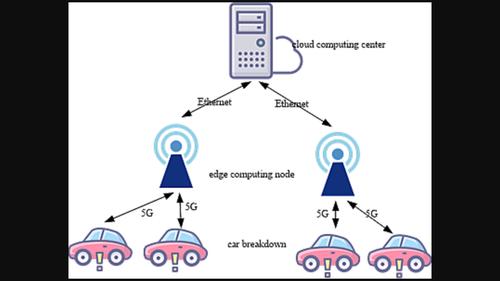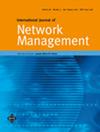Dynamic management network system of automobile detection applying edge computing
IF 1.5
4区 计算机科学
Q3 COMPUTER SCIENCE, INFORMATION SYSTEMS
引用次数: 0
Abstract
Dynamic vehicle detection requires the transmission of large amounts of data collected by different types of sensors to the edge computing nodes. This is likely to cause network delays and congestion, affecting the computation of the edge computing nodes and thus posing serious security risks. Therefore, optimizing data transmission between vehicles and edge computing nodes is a new challenge to be addressed in the practical application of edge computing‐based vehicle dynamic detection architectures. The data requirements of VDT for vehicle detection dynamic detection in different environments are considered, the optimization objectives and constraints are analysed, and a deviation detection and greedy algorithm is proposed in this paper to address the problems of long mixed‐integer linear programme solution time and insufficient practical applications, and the performance of the algorithm is evaluated through simulation experiments conducted by simulation of urban mobility, a traffic flow simulation tool, and PreScan, a vehicle simulation test software. The results show that compared with the deviation detection algorithm, the greedy algorithm can reduce the communication overhead by 82.6%–86.2% in all cases and improve the performance by 13.6%–19.5%, which is more suitable for practical applications. The results of this paper contribute to the automation and modernization of vehicle technology management and information transfer.

应用边缘计算的汽车检测动态管理网络系统
动态车辆检测需要将不同类型传感器收集的大量数据传输到边缘计算节点。这很可能导致网络延迟和拥塞,影响边缘计算节点的计算,从而带来严重的安全风险。因此,优化车辆与边缘计算节点之间的数据传输是基于边缘计算的车辆动态检测体系结构实际应用中需要解决的新挑战。考虑了VDT在不同环境下进行车辆检测动态检测的数据需求,分析了优化目标和约束条件,针对混合整数线性方案求解时间长、实际应用不足的问题,提出了一种偏差检测和贪心算法,并通过模拟城市交通进行了仿真实验,对算法的性能进行了评价。交通流模拟工具和车辆模拟测试软件PreScan。结果表明,与偏差检测算法相比,贪心算法在所有情况下可将通信开销降低82.6% ~ 86.2%,性能提高13.6% ~ 19.5%,更适合实际应用。本文的研究成果有助于实现车辆技术管理和信息传递的自动化和现代化。
本文章由计算机程序翻译,如有差异,请以英文原文为准。
求助全文
约1分钟内获得全文
求助全文
来源期刊

International Journal of Network Management
COMPUTER SCIENCE, INFORMATION SYSTEMS-TELECOMMUNICATIONS
CiteScore
5.10
自引率
6.70%
发文量
25
审稿时长
>12 weeks
期刊介绍:
Modern computer networks and communication systems are increasing in size, scope, and heterogeneity. The promise of a single end-to-end technology has not been realized and likely never will occur. The decreasing cost of bandwidth is increasing the possible applications of computer networks and communication systems to entirely new domains. Problems in integrating heterogeneous wired and wireless technologies, ensuring security and quality of service, and reliably operating large-scale systems including the inclusion of cloud computing have all emerged as important topics. The one constant is the need for network management. Challenges in network management have never been greater than they are today. The International Journal of Network Management is the forum for researchers, developers, and practitioners in network management to present their work to an international audience. The journal is dedicated to the dissemination of information, which will enable improved management, operation, and maintenance of computer networks and communication systems. The journal is peer reviewed and publishes original papers (both theoretical and experimental) by leading researchers, practitioners, and consultants from universities, research laboratories, and companies around the world. Issues with thematic or guest-edited special topics typically occur several times per year. Topic areas for the journal are largely defined by the taxonomy for network and service management developed by IFIP WG6.6, together with IEEE-CNOM, the IRTF-NMRG and the Emanics Network of Excellence.
 求助内容:
求助内容: 应助结果提醒方式:
应助结果提醒方式:


